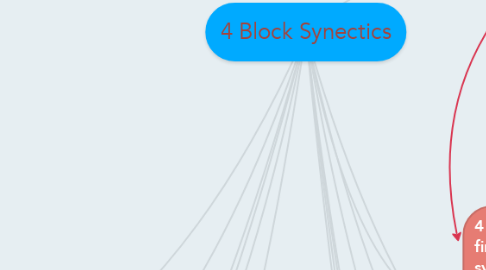4 Block Synectics
by Michelle Taylor

1. The concept that will be the focus of my instructional lesson is READING. How can reading be related to other fun activities? How can students think of reading in exciting, new ways?
2. The intent of the lesson is to get students to relate reading to other activities they are interested in, such as bike riding, swimming, taking trips, and more. Thinking about reading in these ways will hopefully help motivate students to learn to read more, new words. I have a short-term goal and long-term goals with this lesson. I also have an ultimate goal.
3. Short-Term Goal
4. To motivate students to learn new words in first grade, and along the way, to relate reading to the fun activities we discussed in this lesson.
5. Long-Term Goals
6. Students will think of reading as a fun activity.
7. Students will remember how reading is related to the fun activity they thought of during this lesson. Or, they will continue making connections between reading and other fun activities for a lifetime.
8. Example: One student may love the connection between reading and taking trips. As that student learns throughout school, he/she may think, "I need to practice and learn how to read these new words, because the more words I learn to read, the more trips I will be able to take in my mind through reading books.
9. Example: A student who likes the link between reading and riding a bike may think, "I need to practice so my reading becomes a smooth bike ride, rather than a bumpy one.
10. ULTIMATE GOAL: WINNER OF THE GOLD CHAMPIONSHIP BELT
11. To create a lifetime love of reading.
12. Why?
13. 4 Block Synectics would be most appropriate for first graders. It is a condensed version of synectics, one that first graders could grasp and learn from.
14. The Steps to My Lesson
15. Step 1: I will ask students, "What are some activities you enjoy doing?
16. Step 2: I will create a list of student responses. Then, I will choose 4 activities to make comparisons with.
17. Step 3: I will create a 4 square chart on the smartboard, and list the 4 activites of my choosing, one in each square. For example, "riding a bike, swimming, taking trips, and eating," 1 topic per square.
18. Step 4: I will show students how to fill the activity from the 4 square chart into the prompt. The prompt is "Reading is like ________________ because ______________________________."
19. Step 5: In groups of 2-3, students will critically think and make comparisons with reading and each of the 4 activities from the 4 square chart. When the groups have completed this task, each group will share their 2 favorite comparisons they made.
20. Step 6: For closure, I will ask students, "Why is it fun to compare reading to other activities?"


